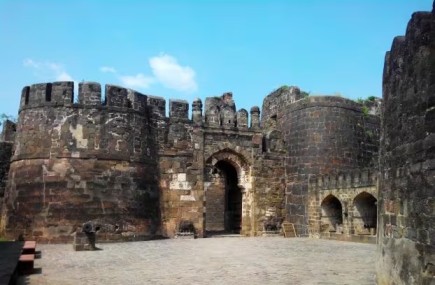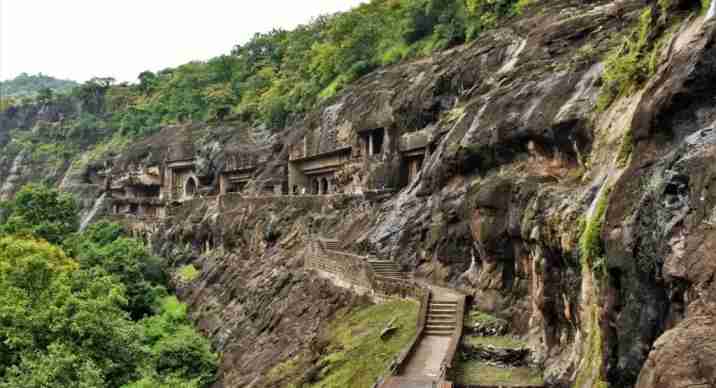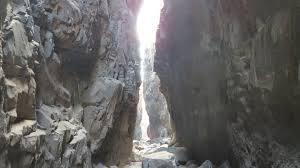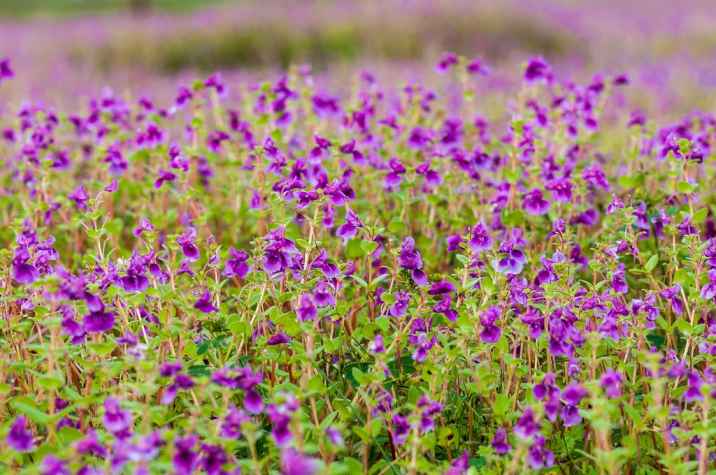Devagiri Fort :

Early History:
The fort’s history dates back to the 12th century when it was initially built by the Yadava dynasty as Devagiri Fort. It served as the capital of the Yadava Kingdom. The original name Devagiri means “Hill of the Gods.”
Conquest by Alauddin Khilji (1296) :
In 1296, Alauddin Khilji, the ruler of the Delhi Sultanate, captured Devagiri Fort after a prolonged siege. The fort’s strategic location made it a significant stronghold in the region.
Renaming as Daulatabad:
After the conquest, Alauddin Khilji renamed the fort as Daulatabad, meaning the “Abode of Wealth.” The name change reflected the fort’s newfound importance as a key military and administrative center.
Shift of Capital:
Muhammad bin Tughlaq, the Sultan of Delhi, decided to shift the capital from Delhi to Daulatabad in 1327. However, the decision faced numerous challenges, including logistical issues and public resistance. Eventually, the capital was shifted back to Delhi, but the move had a significant impact on the region.
Vijayanagara Rule:
In the 14th century, the Vijayanagara Empire gained control of Daulatabad. The fort continued to play a crucial role in the Deccan region’s history.
Later History:
Over the centuries, the fort changed hands multiple times, with various dynasties and rulers asserting control. It was later captured by the Bahmani Sultanate and subsequently by the Mughal Empire under Emperor Aurangzeb.
Architectural Features:
The fort is known for its strong defense mechanisms, including multiple walls and gates, as well as a complex series of secret passages. The Chand Minar, a tall tower within the fort, was added by the Bahmani rulers.
Kailasanatha Temple | Kailash Temple :

- The Kailasa Temple, also known as the Kailasanatha Temple, is part of the Ellora Caves, a UNESCO World Heritage Site located near Aurangabad in Maharashtra, India. Here’s a brief history of the Kailasa Temple at Ellora:
Construction Period:
The Kailasa Temple is believed to have been constructed during the 8th century, between 757 and 783 CE. It was built under the patronage of the Rashtrakuta king Krishna I.
Patronage:
The Rashtrakuta dynasty, which ruled a significant part of the Deccan region during that time, was known for its patronage of art and architecture. The Kailasa Temple is considered one of the most remarkable achievements of Rashtrakuta architecture.
Architectural Style:
The temple is dedicated to Lord Shiva and is carved entirely from a single monolithic rock. This massive rock-cut structure is an excellent example of Dravidian architecture and is one of the largest monolithic structures in the world. The temple complex includes the main shrine, courtyard, and various intricately carved structures.
Design and Layout:
The Kailasa Temple is designed to replicate Mount Kailash, the abode of Lord Shiva, and it is surrounded by smaller structures and sculptures. The main temple structure is a free-standing, multi-storied complex with a pyramidal tower (shikhara) resembling Mount Kailash.
Carvings and Sculptures:
The temple is adorned with numerous sculptures and intricate carvings depicting various Hindu mythological themes, deities, and scenes from epics like the Ramayana and Mahabharata. The detailing on the temple’s walls and pillars is particularly impressive.
Engineering Marvel:
The construction of the Kailasa Temple is considered a marvel of engineering, given that it was carved from top to bottom, rather than excavated from the front. The removal of an estimated 200,000 tons of rock to create this massive structure is an incredible feat.
Religious Significance:
The Kailasa Temple holds great religious significance for Hindus, and it remains a popular pilgrimage site and tourist attraction. The grandeur and scale of the temple reflect the architectural and artistic achievements of the Rashtrakuta dynasty.
The Kailasa Temple at Ellora is not only an architectural wonder but also a testament to the religious and cultural richness of ancient India. Its intricate carvings and colossal size continue to attract visitors and researchers interested in Indian history and architecture.
The Ajanta Caves :

- Ancient Origins:
The Ajanta Caves, located near Chh Sambhaji Nagar in Maharashtra, India, are a UNESCO World Heritage Site. They date back to the 2nd century BCE and were active until the 5th century CE. The caves served as a significant center for Buddhist monks and followers.
Buddhist Influence:
The Ajanta Caves consist of around 30 rock-cut caves, showcasing remarkable sculptures and paintings. The caves were used for meditation, prayer, and communal activities. The art within the caves predominantly depicts stories from the life of Buddha, Jataka tales, and various divinities.
Abandonment and Rediscovery:
Over time, the Ajanta Caves were abandoned and lost to the surrounding jungle. They were rediscovered in the 19th century by a British officer named John Smith during a hunting expedition. The rediscovery brought international attention to the site.
Architectural Features:
The caves exhibit different architectural styles, including Hinayana and Mahayana traditions. The paintings inside the caves are considered masterpieces of ancient Indian art, showcasing a high level of skill and detailing.
Themes and Murals:
The murals in the Ajanta Caves depict various aspects of life in ancient India, including courtly and domestic scenes, religious ceremonies, and images of Buddha. The use of vibrant colors and detailed compositions makes these paintings significant cultural and historical artifacts.
Cultural Significance:
The Ajanta Caves are not only important for their historical and artistic value but also for the insights they provide into the cultural and religious practices of ancient India. They remain a major tourist attraction and a pilgrimage site for Buddhists.
Sandhan Valley | Valley of Shadows

- Sandhan Valley, also known as the Valley of Shadows, is a unique and naturally formed gorge situated in the Western Ghats of Maharashtra, India. It’s a popular destination for adventure enthusiasts and trekkers. While Sandhan Valley itself doesn’t have a specific historical background, the surrounding region and the Western Ghats have a rich historical and geological context.
Here are some relevant points about the general history and features of the region:
Geological Formation: The Western Ghats, where Sandhan Valley is located, is a UNESCO World Heritage Site known for its biodiversity and unique geological formations. The valley was formed over centuries by the action of wind, water, and geological forces, creating a narrow gorge with towering rock walls.
Ancient Settlements:
The Western Ghats have a history of ancient human settlements, with evidence of habitation dating back thousands of years. The region was home to various indigenous communities, and archaeological findings indicate the presence of early human activities.
Fortifications:
The Sahyadri mountain range, of which the Western Ghats are a part, is dotted with historic forts and fortifications. Many of these forts were strategically important during different periods of Indian history, including the Maratha and Mughal eras.
Cultural Significance:
The Western Ghats have cultural and spiritual significance in the Indian context. They are considered sacred by certain communities, and various temples and shrines are scattered across the region.
Tourism and Adventure Activities:
In recent years, Sandhan Valley has gained popularity among adventure enthusiasts, trekkers, and nature lovers. The valley offers a thrilling experience with its narrow passages, rappelling opportunities, and the challenge of traversing through rocky terrain.
While Sandhan Valley itself may not have a specific historical narrative, its surroundings contribute to the broader historical and geological context of the Western Ghats. The valley’s unique landscape and the adventure it offers make it a notable destination for those seeking outdoor activities and a closer connection to nature.
Kaas Pathar | Kaas Plateau :

- Kaas Plateau, also known as Kaas Pathar, is a UNESCO World Heritage Site located in the Satara district of Maharashtra, India. The plateau is renowned for its unique and diverse ecosystem, particularly during the monsoon season when it transforms into a carpet of colorful wildflowers. Here is a brief overview of the history and significance of Kaas Pathar:
Geological Formation:
The plateau is believed to be formed from volcanic activity, and its basalt rock surface provides a unique habitat for various plant species.
Biodiversity:
Kaas Pathar is home to a wide variety of flowering plants, including many rare and endemic species. During the monsoon, the plateau comes alive with vibrant blooms, creating a spectacular natural display. The region has been compared to the Valley of Flowers in the Himalayas.
UNESCO World Heritage Site:
Kaas Plateau was declared a UNESCO World Heritage Site in 2012 as a part of the Western Ghats, which is recognized for its outstanding biodiversity.
Conservation Efforts:
The recognition as a UNESCO World Heritage Site has brought attention to the need for conservation efforts to protect the unique flora and fauna of Kaas Plateau. Conservation measures aim to preserve the delicate balance of the ecosystem and prevent any damage caused by human activities.
Tourist Attraction:
Kaas Plateau has become a popular tourist destination, especially during the flowering season from August to October. The Maharashtra Tourism Development Corporation (MTDC) manages the site to ensure sustainable tourism practices.
Access and Regulations:
Due to its ecological sensitivity, access to Kaas Plateau is regulated to minimize the impact of tourism on the delicate ecosystem. Visitors are required to follow specific guidelines to protect the unique environment of the plateau.
In summary, Kaas Plateau in Satara holds historical significance as a UNESCO World Heritage Site with a unique geological formation and rich biodiversity. Its recognition has led to increased efforts to conserve and protect this natural treasure for future generations.
Exploring the Heights: Top 5 Trekking Adventures in Maharashtra







Leave a Reply